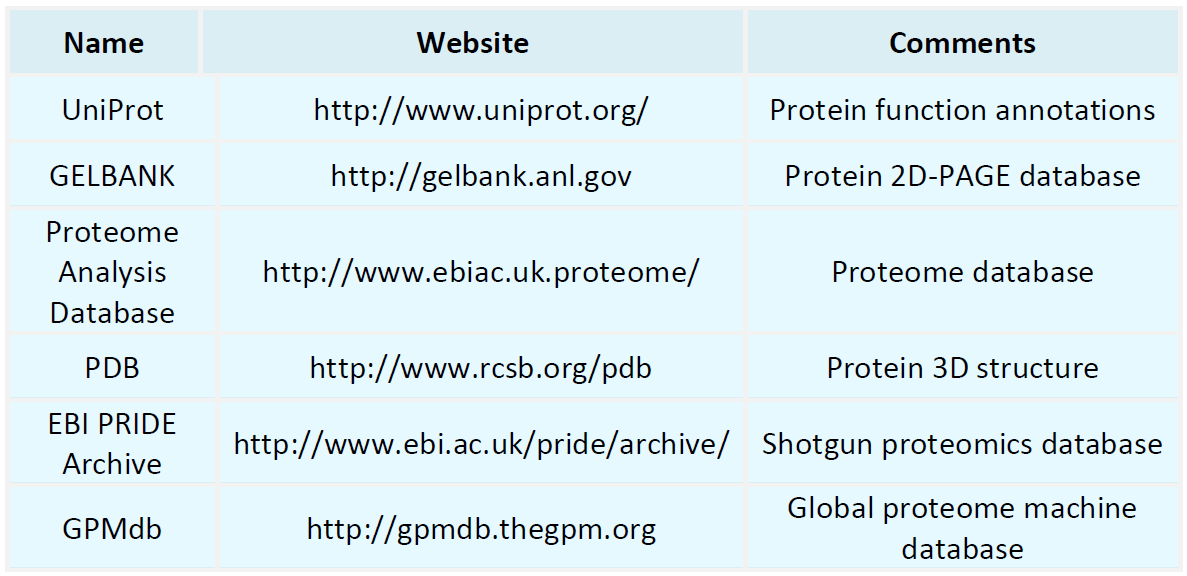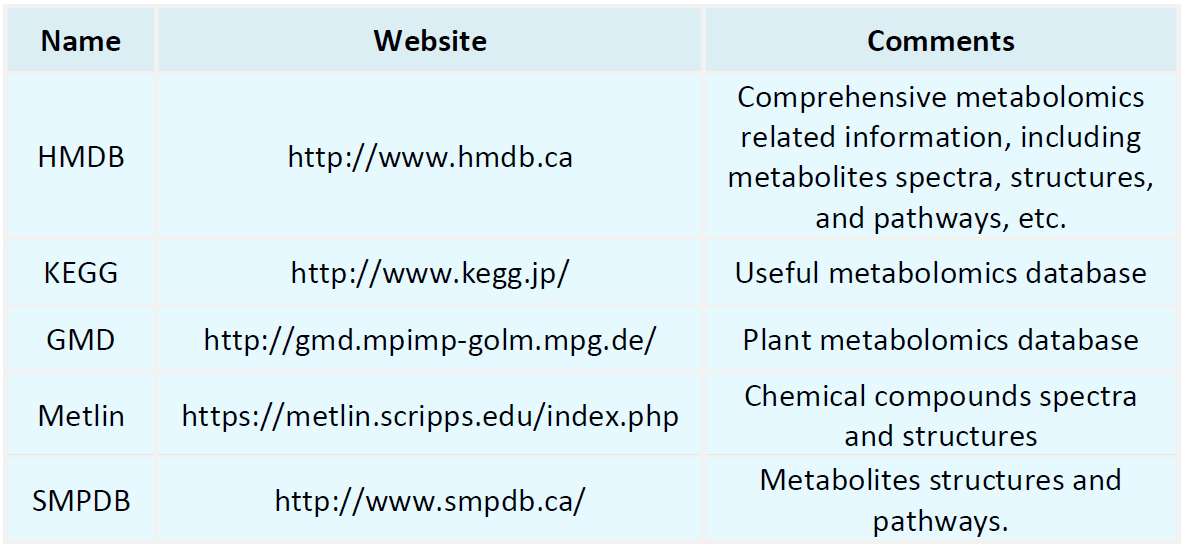Resources
Proteomics Databases

Metabolomics Databases

-
• Determination of Protein Purity Levels
The determination of protein purity is a critical step in protein research. Common methods used for assessing protein purity include SDS-PAGE, absolute quantification techniques such as amino acid analysis, and relative quantification approaches such as the Bradford, Lowry, and BCA assays. SDS-PAGE SDS-PAGE is the most widely used technique for analyzing protein purity. It separates proteins based on their molecular weight, producing distinct bands on the gel. A highly pure protein typically appears as.....
-
• Phosphorylation Site Prediction Online Websites
Phosphorylation site prediction plays a crucial role in bioinformatics and is primarily used to investigate protein phosphorylation. It enables researchers to better understand protein functions and contributes to the diagnosis and treatment of various diseases. Below are several widely used phosphorylation site prediction online websites: 1. GPS (Group-based Prediction System) GPS is a group-based prediction platform designed to identify potential phosphorylation sites in proteins. As one of the...........
-
• Data Analysis of Protein Mass Spectrometry
Data analysis of protein mass spectrometry typically includes interpreting the mass-to-charge ratio (m/z values) and relative intensity of detected ions, which together provide critical insights into the mass and structural characteristics of proteins. The following provides a brief overview of how to interpret protein mass spectrometry data: Basic Components of Protein Mass Spectrometry Data 1. Protein Mass Spectrometry Data Generally Consist of Two Components the mass spectrum and the peptide list.
-
• Component Analysis of Amino Acids in Mixed Samples
The component analysis of amino acids in mixed samples is essential for understanding protein composition and function in biological systems. Amino acids play critical roles in numerous biological activities and biochemical processes. As the fundamental building blocks of proteins, they contribute to a wide range of cellular functions, including catalyzing biochemical reactions, maintaining structural integrity, facilitating signal transduction, and regulating gene expression. Therefore, determining the....
-
• Identification of Protein Purity
The identification of protein purity is a critical step in protein research, as it directly impacts the accuracy and reproducibility of downstream biochemical and structural analyses. Common methods for determining protein purity include SDS-PAGE electrophoresis, chromatography, colorimetric assays, and mass spectrometry. SDS-PAGE Electrophoresis SDS-PAGE is the most widely used technique for evaluating protein purity. Upon electrophoresis, protein samples migrate through the gel and form bands .........
-
• Cation Exchange Chromatography Analysis of Proteins
Cation exchange chromatography analysis of proteins is a powerful separation technique that exploits the differences in the surface charge properties of proteins, particularly the presence of protonated amino acid side chains. This method enables efficient separation and enrichment of proteins under various conditions such as pH, ionic strength, and temperature. Principle The working principle of cation exchange chromatography relies on the net positive charge of proteins at pH values below their........
-
• Nanopore Single Cell Sequencing
Nanopore Single Cell Sequencing is an advanced omics strategy that integrates single-cell isolation technologies with nanopore sequencing platforms, enabling high-resolution profiling of nucleic acid molecules within individual cells. At the single-cell level, sequencing technologies provide crucial insights into cellular heterogeneity, fate determination, and clonal evolution. Nanopore sequencing, characterized by its long-read capability, real-time signal acquisition, and direct RNA/DNA readout........
-
• Cryo Electron Microscopy Protein Structure
Cryo electron microscopy protein structure refers to the study of protein three-dimensional conformations using Cryo-Electron Microscopy (Cryo-EM) under near-native conditions. With rapid advancements in imaging and computational techniques, this approach has emerged as a pivotal branch of structural biology, offering unmatched advantages in elucidating large macromolecular assemblies, membrane proteins, and highly flexible protein complexes. Traditionally dominated by X-ray crystallography and nuclear.....
-
• B Cell Single Cell Sequencing
B cell single cell sequencing is an advanced analytical approach that integrates single-cell isolation techniques with high-throughput sequencing, specifically tailored to dissect the heterogeneity and functional states of B cells under various physiological and pathological conditions. As central players in the adaptive immune system, B cells are responsible for antibody production, antigen presentation, and the regulation of immune responses. Traditionally, immunological studies have treated B cells as...
-
• High-Throughput Cell-Based Assay
High-throughput cell-based assays refer to a modern biotechnology that enables rapid, quantitative, and systematic analysis of large numbers of cell samples through multiparametric and parallelized approaches on automated and miniaturized platforms. This methodology integrates advanced cell culture systems, multi-channel imaging technologies, fluorescence labeling techniques, and high-performance data analysis tools, allowing for the precise measurement of thousands of cell samples within a short time......
How to order?







